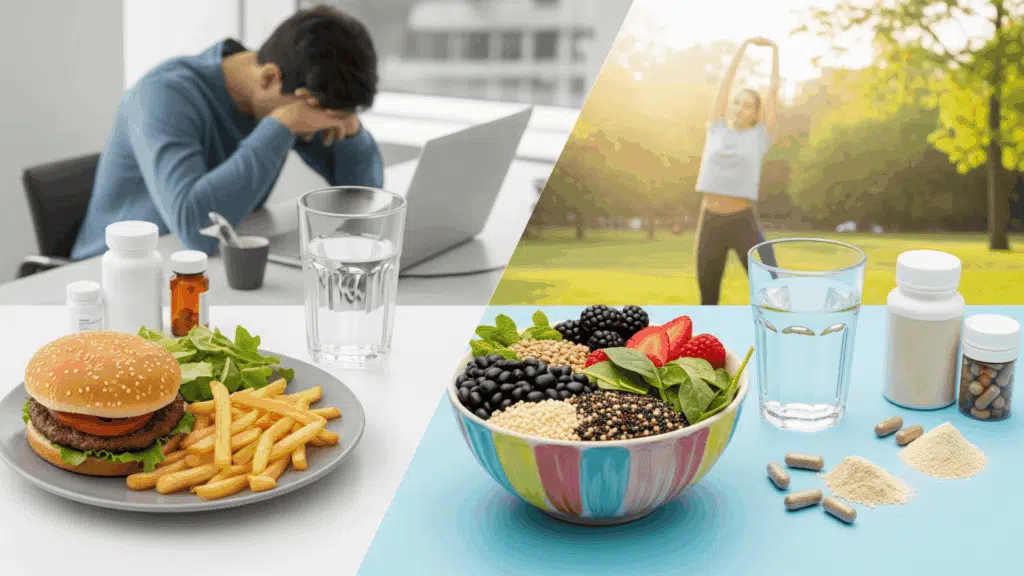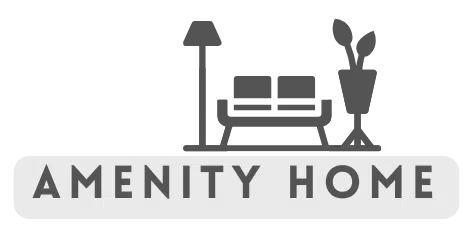When I first heard the term moderate colonic stool burden, I realized how important it really was.
Colonic stool burden simply refers to how much stool is present in the large intestine.
When the amount is “moderate,” it’s not completely normal but not extreme either; it signals that my digestive system may be slowing down.
Knowing this category matters because it can explain symptoms like bloating, constipation, or discomfort.
I want to share what I’ve learned about how it’s diagnosed, the common causes, its impact on health, and simple ways to manage it.
Understanding the Term: What is Moderate Colonic Stool Burden?
The phrase stool burden simply describes how much stool is present in the colon. When a radiology report notes a moderate level, it means there is more stool than usual, but not an extreme or severe accumulation.
This can sound concerning, but in many cases, it’s just a descriptive finding rather than a sign of disease. Some reports use the term to indicate the normal presence of stool, which can be confusing for patients.
What really matters is whether symptoms such as constipation, bloating, or abdominal discomfort are present, as these provide the context behind the radiologist’s observation.
Clinical Relevance & Diagnostic Use
Radiologists often use abdominal X-rays to evaluate stool burden in the colon, which can help identify slow colonic transit, a common cause of constipation.
One popular method for scoring stool burden is the Leech method, which divides the colon into three segments (right, left, and rectosigmoid) and scores each from 0 (no stool) to 5 (severe stool loading). A combined score of 7 or higher usually signals delayed colonic transit.
Studies have shown that the Leech method offers good reliability between observers and correlates well with markers of slow transit, making it a useful tool for diagnosis.
For more detailed information, refer to the Massachusetts General Hospital study on stool burden as a marker for slow colonic transit and the research on the reliability of the Leech scoring system.
Common Causes of Moderate Stool Burden

Understanding why stool builds up in the colon is key to managing moderate stool burden effectively. Several common factors, ranging from diet to health conditions, can contribute to this issue.
Recognizing these causes helps guide proper treatment and prevention:
- Low Fiber Intake: Without enough fiber, stool lacks bulk and moves more slowly through the colon.
- Inadequate Hydration: Not drinking enough fluids leads to hard, dry stool that’s difficult to pass.
- Sedentary Lifestyle: A lack of exercise weakens the digestive muscles and slows bowel movements.
- Medications: Drugs like opioids and anticholinergics reduce colon motility, causing stool buildup.
- Medical Conditions: Disorders such as irritable bowel syndrome (IBS), Parkinson’s disease, and pelvic floor dysfunction affect normal stool passage.
Addressing these causes early can prevent complications and improve digestive health, making it easier to maintain regular, comfortable bowel movements.
Symptoms of Moderate Colonic Stool Burden & When It’s Reported
A moderate colonic stool burden is often detected by chance during imaging tests, as it may cause no noticeable symptoms, especially when mild to moderate.
When symptoms do occur, they typically relate to challenges with bowel movements and abdominal discomfort.
Understanding these signs can help in seeking timely care:
| Symptoms | What It Feels Like | Why It Happens | When to Notice |
|---|---|---|---|
| Bloating | A full or swollen feeling in the belly | Stool accumulation stretches the colon walls | Usually, after meals or late in the day |
| Abdominal discomfort | Mild cramps or dull pain in the lower abdomen | Pressure from stool and slowed transit | Can be constant or come and go |
| Infrequent bowel movements | Having fewer than 3 bowel movements per week | Slow colonic transit slows stool passage | Over days or weeks |
| Difficulty passing stool | Straining or feeling obstruction during bowel movements | Hard, compacted stool from dehydration or low fiber | Often noticed during bathroom visits |
| Feeling of incomplete evacuation | Sensation bowel isn’t fully emptied | Stool buildup or pelvic floor dysfunction | After defecation |
Specialist Tip: Moderate stool burden may go unnoticed unless symptoms persist. If constipation, bloating, or incomplete evacuation are common, medical advice is recommended to avoid complications and improve comfort.
Health Implications of Stool Burden

Beyond how it looks or works, it’s also important to think about the impact on your health. Here are some key ways this can affect your well-being:
1. Mild Stool Burden
Urgency: Low; routine observation advised.
Diagnostic cutoff: Leech score
Mild stool burden involves minimal stool accumulation, often asymptomatic. Management focuses on lifestyle changes and monitoring bowel habits.
The Leech scoring system evaluates stool load by grading three colon segments on a 0–5 scale, with total scores
2. Moderate Stool Burden
Urgency: Moderate; early treatment recommended.
Diagnostic cutoff: Leech score ≈ 7
Moderate stool burden reflects significant fecal accumulation, causing constipation and abdominal discomfort. Early intervention can ease symptoms and reduce progression risk.
A Leech score of ~7 is considered the cutoff for moderate burden, correlating with slow colonic transit on radiographic studies.
3. Severe Stool Burden / Fecal Impaction
Urgency: High; urgent medical care required.
Diagnostic cutoff: Leech score > 12 or clinical/radiological impaction findings
Severe stool burden or fecal impaction involves hardened masses obstructing the colon, causing pain and potential inflammation. Prompt treatment is necessary to avoid serious complications like perforation.
A score of>12 or clear imaging evidence indicates severe disease.
4. Chronic Stool Burden with Complications
Urgency: Variable; based on symptom severity and complications.
Diagnostic cutoff: Clinical and imaging-based assessment as appropriate
Persistent stool burden can cause complications such as megacolon, pelvic floor dysfunction, and colonic inertia, severely affecting quality of life.
Diagnosis includes clinical, imaging, and motility assessments to guide specialized treatment.
Diagnosis & Evaluation of Stool Burden
Effective evaluation of stool burden combines clinical assessment and targeted imaging methods to quantify stool load and bowel function.
Finding the right answers starts with a proper check-up. Diagnosis and evaluation help identify the issue clearly and guide the best course of action forward.
| Evaluation Tool | Purpose | Description & Notes | Source & Link |
|---|---|---|---|
| Clinical Evaluation | Symptom and history review | Initial assessment of bowel habits and symptoms | General clinical guidelines |
| Physical Exam | Stool detection | Abdominal palpation, digital rectal exam | Clinical practice standards |
| Abdominal X-ray | Visual stool assessment | Simple imaging to detect stool location and amount | Massachusetts General Hospital |
| Leech Scoring System | Quantitative scoring | Scores stool in colon segments (0–5 scale, total up to 15) | PubMed Study |
| Ultrasound | Non-invasive detection | Emerging bedside tool for evaluating stool | PMC Article |
Combining history, physical exam, and imaging with standardized scoring systems ensures comprehensive diagnosis, enabling tailored treatment plans.
Key Strategies to Manage and Prevent Stool Burden
Managing and preventing stool burden focuses on promoting regular bowel habits and avoiding factors that contribute to stool accumulation.
These lifestyle changes, combined with appropriate medical support, minimize symptoms and reduce complication risks:
- Gradually increase dietary fiber intake with fruits, vegetables, and whole grains while ensuring adequate hydration.
- Engage in regular physical activity to stimulate bowel motility.
- Use prescribed osmotic agents or mild laxatives cautiously under medical guidance when necessary.
- Be vigilant about medications that may slow bowel transit and discuss alternatives with a healthcare provider.
- Respond promptly to bowel urges and maintain consistent toileting routines.
Note: Combining these approaches early can effectively maintain bowel health and prevent the progression of moderate stool burden to more severe conditions.
Final Thoughts
Reflecting on my understanding of moderate colonic stool burden, it’s clear to me that small, consistent lifestyle changes can make a big difference in maintaining digestive health.
I realize the importance of a fiber-rich diet, staying hydrated, regular exercise, and being mindful of medication side effects.
Early attention to bowel habits can prevent discomfort and serious complications. Taking control of these habits empowers me to improve my well-being effectively.
I encourage anyone reading this to start today: make those simple adjustments and listen to your body.
Don’t wait for problems to escalate; proactive care is the best care. If you found this helpful, check out other blogs on the website for more guides and information!














